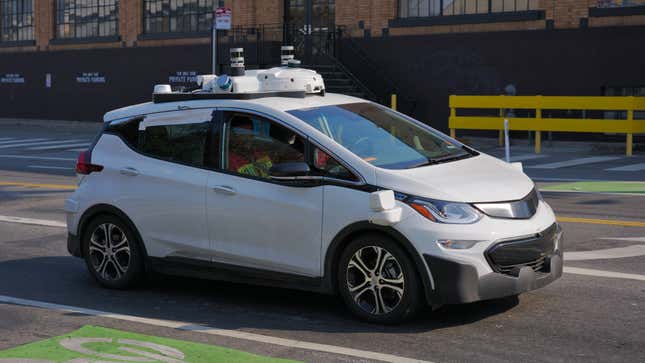Look, I get it. Developing full autonomy in vehicles is difficult, and moving goalposts is much easier. But you, CEOs and disruptors, were the ones who decided we needed autonomous passenger cars over public transit. You’re in too deep, now, to start redefining autonomy as remote control — yet it seems some of you now want to do just that.
A story from Reuters delved into this new approach to autonomous vehicles, in which companies simply relocate operators from the driver’s seat to a seat in a building hundreds of miles away. That’s right, the hot new approach to vehicular autonomy is the oldest trick in the book: outsourcing.

Reuters spoke with Kyle Vogt, CEO of GM’s autonomous Cruise division, who seemed uninterested in entirely removing human operators from AVs. Vogt claimed that “I can provide my customers peace of mind knowing there is always a human there to help if needed,” seemingly referring to the edge cases that keep customers unsure about autonomy. But, if a human driver has to take control of the car in an edge case scenario anyway, why remove them from the car at all?
Unless, of course, solving the problem of autonomy isn’t the real goal. If the end-game for these companies is simply to build more profitable taxis at any cost, to rake in the same fares while cutting expenses, suddenly the concept of remote overseers makes perfect sense. It’s not tech-bro disruption, it’s the oldest trick in the book: outsourcing.
Hire remote drivers in somewhere with a low cost of living, like Kalamazoo, Michigan (the lowest cost-of-living city in the U.S.) or Bangalore, India (the lowest cost-of-living city globally), and you don’t have to go through all the stresses and costs of passing laws like Prop 22 to exempt yourself from wage regulations. If the end goal is to eke more profit out of an age-old industry, autonomy doesn’t matter — reducing the cost of drivers does. Removing them entirely has proven complicated, but outsourcing them remains possible.
Some companies may continue to pursue autonomy, driven by the desire to solve hard problems the way a climber is driven to scale K2, but don’t be surprised if the bigger players begin to abandon the concept. Why spend all that money solving the problem you said you’d solve, when you could solve the one you actually meant to?